Input interpretation

L-lysine
Chemical names and formulas
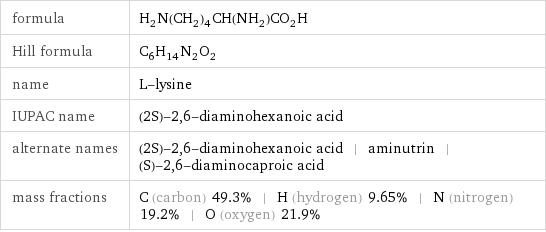
formula | H_2N(CH_2)_4CH(NH_2)CO_2H Hill formula | C_6H_14N_2O_2 name | L-lysine IUPAC name | (2S)-2, 6-diaminohexanoic acid alternate names | (2S)-2, 6-diaminohexanoic acid | aminutrin | (S)-2, 6-diaminocaproic acid mass fractions | C (carbon) 49.3% | H (hydrogen) 9.65% | N (nitrogen) 19.2% | O (oxygen) 21.9%
Lewis structure
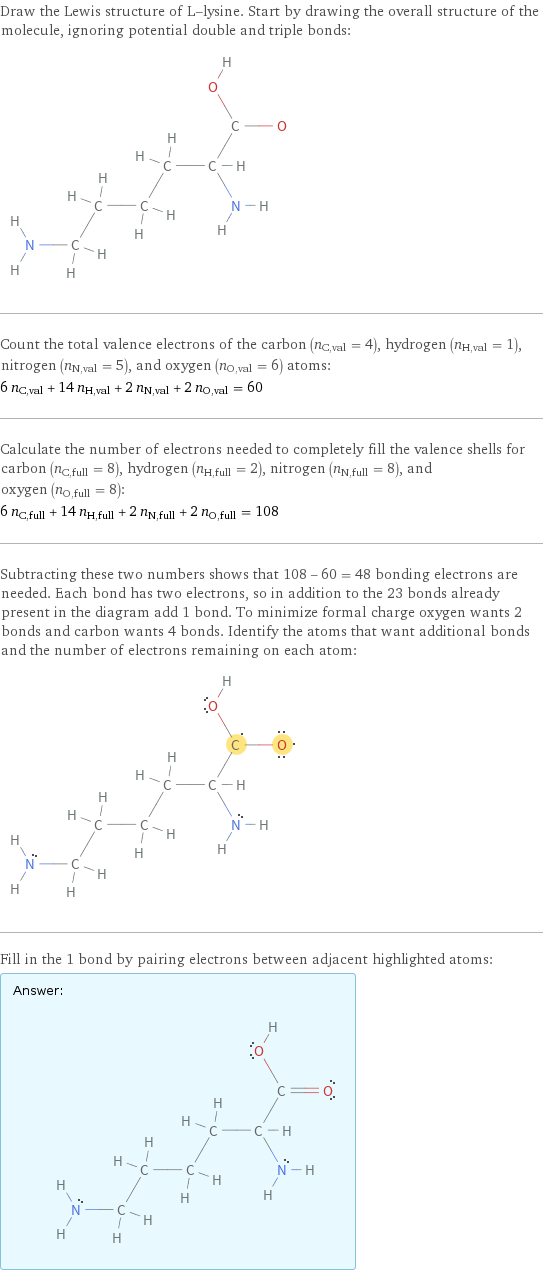
Draw the Lewis structure of L-lysine. Start by drawing the overall structure of the molecule, ignoring potential double and triple bonds: Count the total valence electrons of the carbon (n_C, val = 4), hydrogen (n_H, val = 1), nitrogen (n_N, val = 5), and oxygen (n_O, val = 6) atoms: 6 n_C, val + 14 n_H, val + 2 n_N, val + 2 n_O, val = 60 Calculate the number of electrons needed to completely fill the valence shells for carbon (n_C, full = 8), hydrogen (n_H, full = 2), nitrogen (n_N, full = 8), and oxygen (n_O, full = 8): 6 n_C, full + 14 n_H, full + 2 n_N, full + 2 n_O, full = 108 Subtracting these two numbers shows that 108 - 60 = 48 bonding electrons are needed. Each bond has two electrons, so in addition to the 23 bonds already present in the diagram add 1 bond. To minimize formal charge oxygen wants 2 bonds and carbon wants 4 bonds. Identify the atoms that want additional bonds and the number of electrons remaining on each atom: Fill in the 1 bond by pairing electrons between adjacent highlighted atoms: Answer: | |
3D structure

3D structure
Basic properties
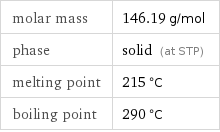
molar mass | 146.19 g/mol phase | solid (at STP) melting point | 215 °C boiling point | 290 °C
Units

Hydrophobicity and permeability properties

experimental LogP hydrophobicity | -2.9 predicted LogP hydrophobicity | -3.75 predicted LogS | -0.14
Basic drug properties

approval status | approved | nutraceutical | small molecule drug categories | dietary supplement | essential amino acid | micronutrient

brand names | enisyl
Amino acid properties
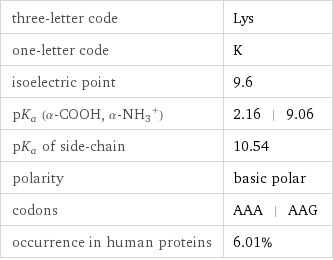
three-letter code | Lys one-letter code | K isoelectric point | 9.6 pK_a (α-COOH, (α-NH_3)^+) | 2.16 | 9.06 pK_a of side-chain | 10.54 polarity | basic polar codons | AAA | AAG occurrence in human proteins | 6.01%
Thermodynamic properties

critical temperature | 753 K critical pressure | 3.99 MPa (at STP)
Chemical identifiers
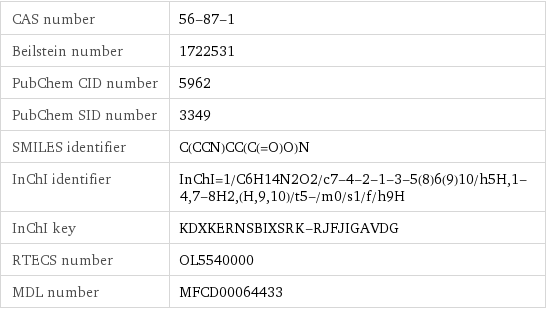
CAS number | 56-87-1 Beilstein number | 1722531 PubChem CID number | 5962 PubChem SID number | 3349 SMILES identifier | C(CCN)CC(C(=O)O)N InChI identifier | InChI=1/C6H14N2O2/c7-4-2-1-3-5(8)6(9)10/h5H, 1-4, 7-8H2, (H, 9, 10)/t5-/m0/s1/f/h9H InChI key | KDXKERNSBIXSRK-RJFJIGAVDG RTECS number | OL5540000 MDL number | MFCD00064433
Safety properties

flash point | 211 °C lower explosive limit | 1.2% (concentration in air) upper explosive limit | 10.1% (concentration in air)
Toxicity properties

RTECS classes | mutagen | reproductive effector